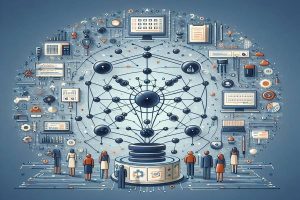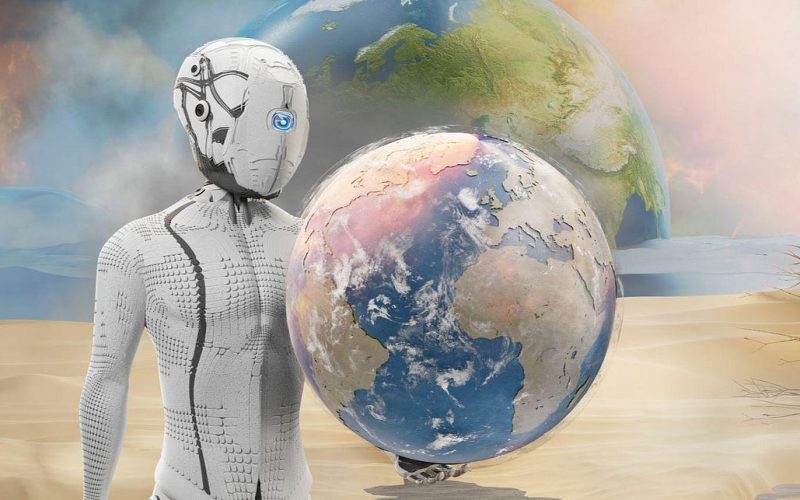The Role of AI in Climate Change Mitigation

Climate change is one of the most pressing global challenges of our time, with wide-reaching consequences for ecosystems, economies, and societies. Addressing this crisis requires innovative solutions, and artificial intelligence (AI) is emerging as a powerful tool in the fight against climate change. By leveraging AI, researchers, policymakers, and businesses can implement strategies that improve resource efficiency, reduce greenhouse gas emissions, and enhance climate resilience. This article explores the multifaceted role of AI in mitigating climate change, highlighting its benefits, real-world applications, and notable case studies.
1. Understanding AI’s Role in Climate Change Mitigation
Artificial intelligence involves the use of algorithms and machine learning models to analyze data, identify patterns, and make predictions. These capabilities enable AI to address complex, large-scale problems that are difficult for traditional methods to manage. In the context of climate change, AI’s strength lies in its ability to process vast amounts of environmental data, optimize resource usage, and develop predictive models to guide mitigation strategies.
2. Key Benefits of AI in Climate Change Mitigation
Improved Efficiency and Resource Management
AI can optimize energy systems, improve agricultural practices, and streamline transportation networks. This leads to reduced emissions and better utilization of natural resources.
Enhanced Predictive Accuracy
AI-powered climate models can forecast weather patterns, extreme weather events, and long-term climate changes with greater precision, enabling better preparation and mitigation.
Accelerated Innovation
AI accelerates research and development of low-carbon technologies, such as renewable energy systems and carbon capture solutions.
Decision Support for Policymakers
By analyzing environmental, economic, and social data, AI can provide actionable insights to guide policy decisions aimed at reducing carbon footprints.
Scalability
AI systems can be deployed across various industries and geographies, allowing scalable and cost-effective solutions for global climate challenges.
3. Applications of AI in Climate Change Mitigation
Renewable Energy Optimization

AI enhances the efficiency and adoption of renewable energy sources like wind and solar power. Predictive algorithms analyze weather patterns to optimize energy generation and storage.
Example: Google has implemented AI to reduce energy consumption at its data centers by 30% using machine learning to predict cooling needs and optimize operations.
Smart Grids
AI-powered smart grids improve energy distribution by balancing supply and demand, reducing waste, and integrating renewable sources.
Case Study: The European Union’s Horizon 2020 program utilizes AI to create energy systems that maximize renewable integration and minimize grid disruptions.
Precision Agriculture
AI helps farmers reduce environmental impacts by optimizing irrigation, fertilization, and pesticide use. Drones and sensors powered by AI monitor soil conditions and crop health in real-time.
Example: Blue River Technology, acquired by John Deere, uses AI to develop smart sprayers that reduce pesticide use by up to 90%.
Climate Modeling and Prediction
Advanced AI models improve the accuracy of climate predictions, helping scientists and governments prepare for and mitigate the impacts of climate change.
Case Study: IBM’s “Green Horizon” project uses AI to forecast air pollution levels and suggest strategies to reduce emissions in urban areas.
Sustainable Urban Planning
AI-driven analytics support sustainable city design, optimizing transportation, reducing energy consumption, and promoting green infrastructure.
Example: Singapore uses AI in its Smart Nation initiative to reduce congestion and improve energy efficiency through AI-powered traffic management systems.
Wildlife and Ecosystem Conservation
AI monitors endangered species, analyzes habitat changes, and combats illegal poaching through advanced tracking systems.
Case Study: Conservation AI uses machine learning to process camera trap data and detect wildlife movement patterns, aiding in biodiversity conservation.
Carbon Capture and Utilization
AI aids in identifying and optimizing locations for carbon capture, as well as improving the efficiency of sequestration technologies.
Example: Carbon Clean Solutions leverages AI to enhance the efficiency of carbon capture processes, reducing operational costs.
4. Case Studies: AI in Action
Microsoft’s AI for Earth Program

Microsoft’s AI for Earth initiative funds projects that use AI to tackle environmental challenges. One notable success is the use of AI to analyze satellite imagery, helping track deforestation and enabling reforestation projects.
DeepMind and Energy Efficiency
DeepMind, an AI company owned by Google, has collaborated with National Grid in the UK to predict energy demand. This helps integrate renewable energy sources and reduce reliance on fossil fuels.
AI-Driven Climate Risk Assessment by ClimateAI
ClimateAI uses machine learning to predict climate risks for businesses, allowing them to adapt their supply chains and operations to changing environmental conditions.
AI and Coral Reef Conservation
The Allen Coral Atlas uses AI to map and monitor coral reefs worldwide, identifying areas most at risk from climate change and guiding conservation efforts.
5. Challenges and Ethical Considerations
While AI holds significant promise, its deployment in climate change mitigation comes with challenges:
Data Bias

AI models require high-quality, representative data. Incomplete or biased datasets can lead to inaccurate predictions and unfair outcomes.
Energy Consumption of AI Systems
Training AI models consumes significant energy, potentially offsetting some of the environmental benefits they deliver. Efforts are needed to develop energy-efficient AI systems.
Equity and Accessibility
AI solutions must be accessible to developing countries, which often face the brunt of climate change impacts. Bridging the digital divide is crucial.
Ethical Implications
The use of AI raises questions about surveillance, data privacy, and decision-making transparency, especially in applications like urban planning and resource management.
Future Prospects of AI in Climate Change Mitigation
The future of AI in combating climate change is promising. Emerging trends include:
- Development of Green AI: Research focuses on creating AI systems with minimal carbon footprints.
- Integration with IoT: AI and the Internet of Things (IoT) are increasingly used to monitor and optimize environmental systems in real-time.
- Advancements in Quantum Computing: Quantum computing could further enhance AI’s capacity to model complex climate systems.
- Global Collaboration: Partnerships between governments, tech companies, and environmental organizations will drive large-scale AI deployment for climate solutions.
Conclusion
AI is a transformative tool in the fight against climate change, offering innovative solutions for resource optimization, renewable energy integration, and climate adaptation. Its ability to analyze vast datasets and provide actionable insights is critical for addressing the complex challenges posed by a warming planet. However, to fully realize AI’s potential, it is essential to address the associated ethical, technical, and accessibility challenges.
By combining AI with global collaboration, sustainable practices, and public engagement, humanity can make significant strides toward mitigating the impacts of climate change and building a resilient future for generations to come.












